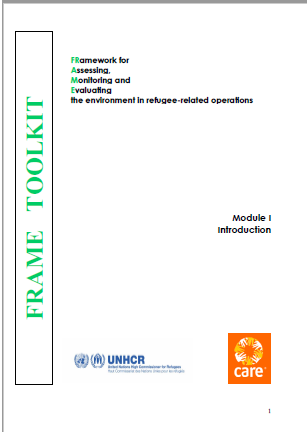Continuous monitoring, evaluation and learning on initiatives within an integrated landscape approach in displacement settings, allows for shared understanding of successes and failures, and informs timely adaptation.
Establish a landscape evaluation monitoring tool
- During the planning stage, determine the objectives, performance standards, indicators and protocols for monitoring.
- Establish a baseline on socioeconomic and environmental conditions in the refugee landscape.
- Allocate sufficient resources (financial, human) for monitoring.
Establish an institutional mechanism for coordinating data collection
- Identify all concerned stakeholders and their diverse interests in the planning phase in developing a comprehensive set of issues and parameters to be monitored, and define commonly agreed indicators and means of verification.
- Identify and agree on tasks and responsibilities, including skills and tools, between members of the monitoring team.
Build learning platforms to feed lessons back into planning and across-site comparisons
- Establish learning platforms (both online and physical) for sharing lessons learned from the successes and failures of different approaches, strategies, methodologies and techniques.
What a good monitoring, evaluation and learning (MEL) system looks like according to stakeholders in Uganda (Rhino Refugee Camp Settlement in Madi-Okollo District)
A good MEL system encompasses all actors, leaving no aspect unmonitored. It measures progress on achievement of outputs being assessed against the objectives, and social, environmental and economic indicators. It is inclusive and participatory, context based, upholds ethics and social safeguards, is admissible, cost effective, convenient, timebound and understandable. The MEL system is both sensitive to risks and prevailing conditions in the displacement setting and aligns with county and national government policies and their broader development agendas. It functions through interdisciplinary and transdisciplinary teams with independent and well-clarified roles and targets. The system produces accurate data for analysis to inform learning and adjustments of implementation. Effective MEL is characterized by clearly defined timelines, adequate planning resource mobilization and coordination.
Source: Buyinza J, Gambo J, Acanakwo E, Schure J, Sola P, Awono A, Njenga M. 2022. Guidance for a Landscape Approach in Displacement Settings (GLADS): Uganda Case Study. Bogor, Indonesia; Nairobi: CIFOR-ICRAF.








